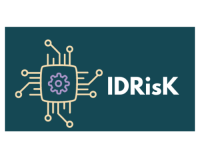
Project
IDRISK
Contractor
INSA/European Comission
Researchers
Warning: Undefined array key "_grid_column_tablet" in /home/liaccfeuppt/public_html/liaccwp/wp-content/plugins/elementor/includes/base/controls-stack.php on line 1492
Warning: Undefined array key "_grid_row_tablet" in /home/liaccfeuppt/public_html/liaccwp/wp-content/plugins/elementor/includes/base/controls-stack.php on line 1492
Warning: Undefined array key "_flex_order_tablet" in /home/liaccfeuppt/public_html/liaccwp/wp-content/plugins/elementor/includes/base/controls-stack.php on line 1492
Warning: Undefined array key "_flex_size_tablet" in /home/liaccfeuppt/public_html/liaccwp/wp-content/plugins/elementor/includes/base/controls-stack.php on line 1492
Warning: Undefined array key "_flex_size_tablet" in /home/liaccfeuppt/public_html/liaccwp/wp-content/plugins/elementor/includes/base/controls-stack.php on line 1492
Software development for an App for sample collection and the development of a food classification software according to FoodEx2
Abstract
In recent years we have worked with EFSA on reporting food data for the chemical contaminants and food additives domains. Over the years, INSA has been the central point for collecting data from various national entities for the processing and forwarding of this information to EFSA. A National Data Management System was built from the ground up to facilitate this task. A consortium was created between 3 partners (INSA, ASAE & HAPIH) who share the common interest to further develop their own official control of National Data Management Systems (NDMS). INSA developed the PT.ON.DATA NDMS based on SSD and SSD2 data models in cooperation with ASAE and other competent national authorities. HAPIH has developed an NDMS with a similar approach. Both ASAE and HAPIH are interested in implementing real-time sample data collection based on preparatory digital forms already existing in PT.ON.DATA. The three partners are committed to investigating and implementing an automated approach to the FoodEx2 classification of food samples using existing knowledge and databases at HAPIH and INSA. Consortium objective: The consortium aims to improve the quality of raw occurrence data for risk assessment, reducing error, increasing completeness and timeliness in both data fields and food classification, while simultaneously reducing time and effort and therefore freeing up scientists’ time for data analysis and risk assessment. Together, the improvements will be reflected in the strengthening of the food safety risk assessment capacity of the countries involved and will contribute to a better assessment of risks associated with the food chain by EFSA. This project arose out of two distinct problems with data reporting: Data technicians/experts, whether they are working on sample data in the field or cleaning and preparing data for reporting, an absurd amount of manual work is done, a lot of time is spent. The more manual work we have, the more error-prone the data will become. Main objectives: improve/restructure the dynamic sampling forms module, develop the application that will run on mobile devices, plan and implement an automatic NDMS FoodEx2 classification system for sampling descriptions.
Reference
FEUP/INSA/2021-77453